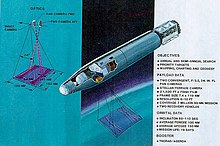"O Big Brother de Orwell
George Orwell, escritor inglês falecido em 1950, desencantado com o socialismo, especialmente com sua faceta stalinista, causa que abraçara para melhor lutar contra o nazi-fascismo, dedicou os últimos anos de vida a denunciar o comunismo stalinista. Para tanto publicou dois livros, nos anos de 1945 e 1949, ambos com impressionante projeção, e que fizeram por acirrar ainda mais o feroz debate ideológico entre comunistas e democratas que dividiu o mundo intelectual na época da guerra fria. Um deles intitulava-se
Animal Farm (A revolução dos bichos), e o outro simplesmente tinha um número na capa, o
Nineteen Eigthy Four ("1984"), no qual apareceu pela primeira vez o onipresente
Big Brother, o Grande Irmão.
|
"If you want a picture of the future, imagine a boot stamping on a human face--for ever."
(Se você quer uma imagem do futuro, imagine uma bota prensando um rosto humano para sempre")
G.Orwell - 1984, 1949
|
 |

 |
 |

|
O olho totalitário tudo vê |

|

|
O intento do cidadão Winston Smith de rebelar-se contra o todo-poderoso sistema em que ele vivia fracassara rotundamente. Preso, torturado de uma maneira especial pela polícia política do regime (ele era fóbico a ratos, justamente com quem teve que compartilhar uma gaiola), ele não resistiu. Em pouco tempo, reciclado por um programa de recondicionamento de praxe, na verdade uma lavagem cerebral em regra, Winston voltou a ser um servo da ordem totalitária. Esta é em essência o enredo da novela de terror político
Neneteen Eithy-Four ("!984") de George Orwell, aparecida em 1949. Livro que assinalou o rompimento definitivo dele com qualquer causa de esquerda. De certa forma, pode-se considerá-la como o epílogo do seu desentendimento com os comunistas, drama moral e ideológico que se arrastava há mais de dez anos, desde os tempo da Guerra Civil espanhola(1936-39).
 |

 |
 |

|
George Orwell (1903-1950) |

|

|
Como tantos intelectuais da sua geração, a crise dos anos 30, seguida da espantosa ascensão do nazi-fascismo, quando ditadores como Hitler, Mussolini e Franco, passaram a servir de exemplo e inspiração para tantos outros candidatos à tirania, Orwell inclinou-se pela resistência a eles. Nunca, entretanto, foi um militante comunista. Considerava-se um independente, um companheiro de viagem da causa. E assim o foi. Em dezembro de 1936, ele, como tantos outros estrangeiros, apresentou-se como voluntário para deter o golpe direitista do general Franco, na Espanha. O caldo entornou de vez quando, ainda que ferido na garganta quanto lutava ao lado dos milicianos de esquerda, em maio de 1937, ele foi, justamente por não ser um enquadrado, considerado um fora-da-lei pelos comunistas espanhóis alinhados a Moscou.
Orwell, companheiro de viagem
Reciclando o camarada Winston
"Ice Station Zebra (novel
[ROMANCE])
Ice Station Zebra is a 1963 thriller novel written by Scottish author Alistair MacLean. This was the last of MacLean's classic sequence of first person narratives which began with Night Without End, and represented a return to that earlier novel's Arctic setting. After completing this novel, whose plotline parallels real-life events during the Cold War, MacLean retired from writing for three years. In 1968 it was adapted into a film of the same name.
Plot summary
Drift Ice Station Zebra, a British meteorological station built on an ice floe in the Arctic Sea, has suffered a catastrophic oil fire; men have died and shelter and supplies have been destroyed. The survivors are holed up in one hut with little food and heat. If help does not reach them quickly, they will die.
The (fictional) American nuclear-powered submarine USS Dolphin is dispatched on a rescue mission. Just before it departs, the mysterious Dr. Carpenter, the narrator, is sent to accompany it. Carpenter claims that he is necessary as an expert in dealing with frostbite and other deep-cold medical conditions.
At first, the submarine's Captain Swanson is suspicious of Carpenter, even though he receives an order from Chief of Naval Operations of the U.S. Navy instructing him to obey Carpenter's every command except where crew safety is at stake. Swanson tells Carpenter he is still inclined to refuse. Carpenter is thus forced to reveal that this is not simply a rescue mission; the station is actually a highly-equipped listening post, keeping watch for nuclear missile launches from the Soviet Union. Hearing this, Swanson allows Carpenter to come along.
Before the Dolphin dives under the Arctic ice pack, it tries to contact Zebra, whose radio signals are becoming weaker by the hour, but in vain. Once under the Arctic ice pack, it approaches the calculated position for Zebra, then searches for a place to surface. Eventually finding a place where the ice is thin enough to break through, the Dolphin establishes tenuous radio contact, and gets a bearing on Zebra's position. But Zebra is too far away to attempt to reach it on foot, so the submarine re-submerges, hoping to get closer. Carpenter confides to the Captain that the commander of the station is his brother.
After a tense, desperate search, the Dolphin finds open water and surfaces just five miles from the station. Carpenter, Executive Officer Hansen, and two crewmen make the perilous journey through an Arctic storm on foot, taking with them as many supplies as they can. Zabrinski, one of the crewmen, breaks his ankle on the way. After a harrowing trek they reach Zebra. Devastation awaits them. Three of the eight huts and almost all supplies have been destroyed by a widespread oil fire. Eight men are dead - burnt to a crisp. Eleven men are alive, but barely. While the victims are being tended to, Carpenter does some investigating on his own.
Unable to make radio contact, as the radio was damaged in Zabrinski's fall, Carpenter just receives a message from the Dolphin telling them to return at once, as the ice is closing. Carpenter and Hansen leave Zabrinski and the other crewman to attend to the survivors. After nearly getting lost in the terrible storm of blowing ice, Carpenter and Hansen finally return to the Dolphin, bearing news of their findings, as well as the relatively thin ice nearer to Zebra. Dolphin submerges and heads for Zebra. The ice there is still too thick to break with the sub's sail, so Swanson decides to blow a hole in the ice with a torpedo. Unbeknownst to him, someone had tampered with the wiring of the indicators which indicated the open/close status of the outer tube doors. When the crew attempts to load a torpedo into one of the tubes, a torrent of water rushes through the inner door, killing an officer and sending Dolphin into a nearly catastrophic fall. Only by heroic measures is Dolphin able to save herself.
After successfully breaking through the ice with a torpedo, fired from an un-sabotaged tube, Dolphin finally emerges just two hundred feet from Zebra. The sick men are treated, but some of them are still too ill to be carried to the sub. Carpenter does some more investigating. He finds that the fire at Zebra was no accident; it was a cover to hide that three of the dead men, one of whom was his brother, were murdered. Carpenter already knows why; the only question is who. Swanson also has a look around and finds no trace of the sophisticated listening equipment Carpenter had claimed was Zebra's purpose — Carpenter had lied again. Meanwhile, Swanson found a loaded gun in the petrol tank of a tractor, where the petrol would keep it from freezing, whereas Carpenter found food, batteries and a powerful radio hidden in the hut being used as a morgue.
Finally the survivors are all brought aboard, Zebra is abandoned, and Dolphin heads back, but not without several further incidents. The ship's doctor is knocked into a coma. Carpenter himself is severely hurt in another apparent accident. Then a fire breaks out in the engine room and the sub is forced to shut down its nuclear reactor. Without power for air purification or heating, Dolphin looks set to become a frozen tomb trapped under the ice pack. Only the ingenuity of Commander Swanson and the dedication of the crew saves the ship.
Carpenter announces that the fire was no accident. He reveals to the Captain that he is an MI6 officer. Carpenter's real mission is to retrieve photographic film from a reconnaissance satellite (see Corona) that has photographed every nuclear weapons installation in the U.S. The film, ejected from the satellite, had landed near Zebra. Carpenter's brother had been meant to retrieve it, but Russian agents killed him. The two Russian agents are amongst the survivors from Zebra. Carpenter finally reveals their motives, methods, and the men. The film is now in American hands, and the agents on their way to the gallows.
Noticeable humour
Dr. Benson, the ship's doctor, is assigned by Commander Swanson to show Dr. Carpenter around the Dolphin. Introducing Carpenter to the head cook of the ship, Benson refers to him as "my arch enemy," for he perpetually subverts Benson's lectures on healthy eating with hearty, tasty, and plentiful food.
While preparing to fire a torpedo at the ice cap, Hansen orders a crewman to check if there is water in the torpedo tube. Opening the test cock, he checks and reports to Hansen, "Clean as a whistle and dry as a bone." Hansen says resignedly to Dr. Carpenter, "That's not the way he was taught."
Background and origin of plot
The novel was influenced by the heightened atmosphere of the Cold War, with its escalating series of international crises such as the U-2 incident; West Berlin; unrest in Hungary, Indochina and Latin America; and the Cuban missile crisis.
The novel exploits contemporary fascination with the under-the-ice exploits of such American nuclear-powered submarines as Nautilus, Skate, Sargo and Seadragon. MacLean may have been anticipating the excitement of his British readers regarding the upcoming commissioning of the HMS Dreadnought, the Royal Navy's first nuclear submarine. Also, MacLean may have been influenced by press reports about the nuclear-powered submarine USS Skate visiting Ice Station Alpha, located on Ice Island T-3 in the Arctic, on 14 August 1958, as part of the International Geophysical Year (IGY).[1] At the time that the novel was published, under-the-ice operations by U.S. Navy nuclear-powered submarines were prohibited until SUBSAFE measures had been implementated following the loss of the USS Thresher.[2]
Ice Station Zebra also uses the accelerating Space Race between the United States and the Soviet Union as the backdrop for the novel, and may have been directly inspired by news accounts from April 17, 1959, about a missing experimental Corona satellite capsule (Discoverer ll) that inadvertently landed near Spitsbergen on April 13 and may have been recovered by Soviet agents.[3][4] In 2006 the National Reconnaissance Office declassified information stating that "an individual formerly possessing CORONA access was the technical advisor to the movie" and admitted "the resemblance of the loss of the DISCOVERER II capsule, and its probable recovery by the Soviets" on Spitsbergen Island, to the book by Alistair MacLean.[1]
Finally, MacLean even mentions the newly-operational Soviet nuclear-powered icebreaker Lenin by involving the ship in an aborted attempt to reach the survivors at Drift Ice Station Zebra.
Film adaptation
The novel was later very loosely adapted into the 1968 John Sturges film of the same name starring Rock Hudson. The most obvious changes involved the names of the novel's characters:
- The nuclear submarine Dolphin became the USS Tigerfish (SSN-509).
- The British spy Dr. Carpenter was renamed David Jones, portrayed by Patrick McGoohan.
- Commander Swanson was changed to Commander Ferraday, portrayed by Hudson.
Additional characters were added, including a U.S. Marine platoon trained in Arctic warfare:
Much of the novel's characterization involving the submarine's crew was jettisoned in favor of these new cinematic creations. Also all characters from the Ice Station Zebra in novel were removed. They were claimed to have died in the fire, notably two main villains who had caused the fire in the first place. Also removed were all references to Dr. Carpenter's brother.
Beyond the name change, the film's submarine has a design similar to the first nuclear-powered submarine, the Nautilus, rather than the more streamlined, teardrop-shaped vessel, either the contemporaneous Skipjack or Permit design, that was described in the novel. In the movie, the fire on the drift Ice Station was explained away as accidental.
Unlike the film, the novel shows little overt Soviet interest in recovering the lost spy satellite other than a spy ship disguised as a fishing trawler waiting outside Holy Loch when the Tigerfish sets sail. The novel's climax of a fire onboard the submarine is replaced with the nearly fatal flooding of the forward torpedo room prior to the film's intermission. The film's new climax involves a superpower confrontation between Soviet paratroopers and the American marines at Ice Station Zebra itself, but concludes on a much more ambiguous note than the novel, reflecting the perceived thaw in the Cold War following the Cuban Missile Crisis.
Popular culture
The novel is referenced in "The Leadership Breakfast," the eleventh episode of the second season of The West Wing. In the opening scene, Josh and Sam are trying to make a fire in the Mural Room fireplace because the building's heat isn't working. As he's piling wood into the fireplace, Josh says, "It's like Ice Station Zebra in here."
The novel is parodied in the Sealab 2021 third season episode, "Frozen Dinner." The Sealab crew must rescue scientists aboard Ice Station Zebra, a research station on top of an ice floe. The ice floe has turned upside down and trapped the two men, while the Sealab crew tries to rescue them in a submarine. While the scientists immediately turn to cannibalism, the Sealab sub — led by a German crew resembling that from Das Boot — predictably fumbles the rescue.
The rock band Silkworm titled a song "Ice Station Zebra" on their 1997 album Developer.
An episode of the TV series Get Smart was titled "Ice Station Siegfried."
Notes
- ^ Williams. Submarines Under Ice, p. 133 - 141
- ^ Polmar and Moore. Cold War Submarines, p. 156
- ^ Chronology of Spy Satellites @ Totse.com
- ^ Taubman, Secret Empire, p. 287.
References
- Norman Polmar and K.J. Moore. Cold War Submarines: The Design and Construction of U.S. and Soviet Submarines (Washington, DC: Potomac Books, Inc., 2004) ISBN 1-57488-530-8
- Phil Taubman. Secret Empire: Eisenhower, the CIA, and the Hidden Story of America’s Space Espionage (New York, NY: Simon & Schuster, 2003) ISBN 0684856999
- Marion D. Williams. Submarines Under Ice: The U.S. Navy's Polar Operations (Annapolis, Maryland: Naval Institute Press, 1998) ISBN 1-55750-943-3
External links
Confira abaixo a programação completa da homenagem:
COMEMORAÇÃO DO 70º ANIVERSÁRIO DE FAYE DUNAWAY – Sexta-feira, dia 14 de janeiro:
22h – REDE DE INTRIGAS (Network, 1976)
0h10 – BONNIE & CLYDE – UMA RAJADA DE BALAS (Bonnie and Clyde, 1967)
2h15 – O CAMPEÃO (The Champ, 1979)
|
*Horário de Brasília. Programação sujeita a alterações sem aviso prévio.
|
|
TCM IN CONCERT: em janeiro, uma programação especial de shows espetaculares
Todas as quintas-feiras do mês, sempre às 22h*, o palco do canal do entretenimento clássico
será invadido por alguns dos nomes mais representativos da música mundial
Ao longo de janeiro, os fãs da boa música terão que reservar uma data específica em suas agendas para ficarem grudados diante do palco – ou, neste caso, diante da TV, devidamente sintonizada no TCM. Isso porque todas as quintas-feiras do mês, sempre a partir das 22h, o canal vai apresentar eventos musicais que marcaram um novo padrão e acabaram entrando para a história. Trata-se de um bloco de programação especial do TCM IN CONCERT – que, no dia 6, já começa com uma mistura de música, espetáculo e cinema. Trata-se de ROGER WATERS: THE WALL - LIVE IN BERLIN, representação da obra-prima do grupo Pink Floyd conduzida por seu ex-baixista e líder em homenagem à queda do Muro de Berlim. Gravado no dia 21 de julho de 1990 diante de um público de mais de 250.000 pessoas, o show é uma recriação ambiciosa ao vivo do filme de Alan Parker, lançado em 1982 e inspirado no álbum duplo conceitual de mesmo nome.
O que está programado a seguir é igualmente histórico: tem Michael Jackson na HISTORY WORLD TOUR registrada durante a turnê de mesmo nome que cobriu, com 82 apresentações entre 1996/1997, a maior parte da Europa, Ásia e Oceania, passando por cidades como Moscou, Budapeste, Seul, Bangkok, Sydney, Oslo, Dublin, Tóquio, Milão, Paris, Honolulu, Helsinki e Johannesburgo, entre outras. Na sequência, uma apresentação para poucos felizardos na casa londrina Gaumont State Theatre, em Kilburn, uma das últimas gravações do inesquecível Keith Moon tocando ao vivo com seus colegas do The Who, em uma performance cheia de deliciosos e inesperados improvisos. E no mítico estádio de Wembley, rigorosamente no mesmo ano, nada menos do que duas das mais importantes bandas inglesas de rock da história. Em 86, o Genesis apresentou-se diante de 288 mil fãs em quatro dias de apresentações com ingressos esgotados, na turnê do maior sucesso comercial da carreira do grupo “Invisible Touch”. Foi neste mesmo ano que o Queen, no auge de seu sucesso, lotou o estádio e presenteou sua terra natal com um dos shows mais memoráveis de sua trajetória e que, para alguns especialistas, é um dos mais intensos registros ao vivo de uma banda de rock.
Confira abaixo a programação completa do especial TCM IN CONCERT:
Quinta-feira, dia 6 de janeiro
22h - ROGER WATERS: THE WALL - LIVE IN BERLIN
Quinta-feira, dia 13 de janeiro
22h - MICHAEL JACKSON HISTORY WORLD TOUR
Quinta-feira, dia 20 de janeiro
22h - THE WHO: AT KILBURN 1977
Quinta-feira, dia 27 de janeiro
22h - QUEEN: LIVE AT WEMBLEY
23h25 – GENESIS: LIVE AT WEMBLEY STADIUM
*Horário de Brasília. Programação sujeita a alterações sem aviso prévio.
Em janeiro, TCM convida seus espectadores a mergulharem
no fundo do mar dentro de um submarino
Todos os sábado do mês serão dedicados à vida nessas embarcações, a partir das 17h*
As máquinas solitárias do fundo do mar são o tema do especial IMERSÃO! IMERSÃO! IMERSÃO! do canal TCM, que será transmitido aos sábados, sempre às 17h*. Explorada em muitas missões de caçadores de recompensas e, também, na história militar, a vida nos submarinos foi para o cinema com muitas histórias narradas em meio a esses pequenos e claustrofóbicos espaços de metal. Por isso, o TCM exibe um especial, começando no dia 1º de janeiro, com o retrato mais realista desta rotina tensa, com “O Barco-Inferno em Alto Mar” (1981). O filme, considerado por muitos o melhor desse subgênero, conta o dia a dia de 44 homens que precisam sobreviver aos horrores da guerra do mar, em uma embarcação chamada “caixão de aço”.
No sábado seguinte, 8 de janeiro, “Os Russos estão chegando! Os Russos estão chegando!” (1966) traz uma mistura de comédia e guerra no conflito de duas superpotências – um submarino soviético que encalha sem querer na costa da Nova Inglaterra e acredita que vá conseguir ajuda. Em 15 de janeiro, um submarino norte-americano desliza sob o gelo polar com espiões soviéticos entre a tripulação com a missão de resgatar um satélite com informações secretas em “Estação Polar Zebra” (1968). Em “Raposa do Mar” (1957), um drama marcante vivido na Segunda Guerra Mundial, um destróier americano e um submarino alemão vivem uma caçada marinha tentando prever as manobras do inimigo em um complexo jogo de xadrez. E, finalizando o especial marítimo no dia 29 de janeiro, o filme “Maré Vermelha” (1995) conta a história de um poderoso capitão que entra em conflito com um oficial quando decide detonar seus mísseis e causar uma catástrofe mundial.
Confira abaixo a programação completa do especial IMERSÃO! IMERSÃO! IMERSÃO!.
Sábado, dia 1º de janeiro, às 17h
O BARCO-INFERNO EM ALTO MAR (Das Boot, 1981)
Sábado, dia 8 de janeiro, às 17h
OS RUSSOS ESTÃO CHEGANDO!, OS RUSSOS ESTÃO CHEGANDO! (Russians are coming!, the russians are coming!, 1966)
Sábado, dia 15 de janeiro
ESTAÇÃO POLAR ZEBRA (Ice Station Zebra, 1968)
Sábado, dia 22 de janeiro
A RAPOSA DO MAR (The Enemy Below, 1957)
Sábado, dia 29 de janeiro
MARÉ VERMELHA (Crimson Tide,1995)
|
*Horário de Brasília. Programação sujeita a alterações sem aviso prévio.
|
|
|
|
No TCM o assinante encontra os melhores clássicos mundiais, desde a época de ouro do cinema, até as séries que fizeram história na televisão. O TCM transmite 24 horas de programação para a América Latina e Caribe; em espanhol, inglês e português e está disponível para três milhões de assinantes no Brasil e alcança mais de 20 milhões de domicílios na América Latina.

























